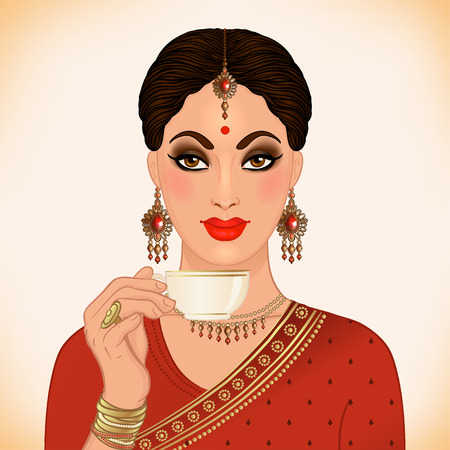Introduction to Rajasthani Jewellery & Terracotta Handicrafts
A warm welcome to the colourful world of Rajasthani treasures! Rajasthan, the land of vibrant festivals, majestic forts, and golden sands, is also renowned for its exquisite jewellery and traditional terracotta handicrafts. These art forms are not just decorative pieces but carry a deep cultural significance that reflects the royal legacy and rich heritage of the region. Rajasthani jewellery—whether it is the dazzling kundan, meenakari, or the bold silver adornments—tells stories of skilled artisanship passed down through generations. Similarly, terracotta art, with its earthy tones and intricate motifs, brings alive the spirit of Rajasthan’s rural life right into your home. By incorporating these unique crafts into your décor, you invite a touch of Indian tradition and timeless beauty to your living spaces, creating an atmosphere that is both soulful and welcoming.
2. Rajasthani Jewellery: More Than Adornment
Rajasthani jewellery holds a special place in the hearts and homes of people across India, not only as exquisite adornment but also as a celebration of tradition and heritage. Each ornament, whether it graces an individual or decorates a home, tells a story of craftsmanship passed down through generations. These pieces reflect the rich tapestry of Rajasthan’s culture, making them cherished heirlooms and striking elements for home décor.
Traditional Forms of Rajasthani Jewellery
The art of jewellery making in Rajasthan is incredibly diverse, featuring iconic designs such as borla (a unique maang tikka), aadh (choker necklace), bajuband (armlet), and nath (nose ring). These forms are not only worn at weddings and festivals but are increasingly used to decorate living spaces—hung on walls, displayed in glass cabinets, or even embedded into frames for a royal touch.
Materials That Tell Stories
The beauty of Rajasthani jewellery lies in its materials. Artisans use time-honoured techniques to create masterpieces from gold, silver, precious stones, and indigenous substances like lac. Here’s a quick look at the most celebrated materials:
| Material | Description | Cultural Significance |
|---|---|---|
| Kundan | Pure gold foil set with gemstones | Symbolizes luxury and auspiciousness; often seen in bridal sets |
| Meenakari | Vibrant enamel work on metal surfaces | Represents festivity and artistic expression; brightens up any décor piece |
| Lac | A natural resin shaped into colourful bangles and ornaments | Popular among all age groups; believed to bring good fortune |
The Cultural Meaning Behind Every Ornament
In Rajasthani homes, jewellery isn’t just about beauty—it carries deep cultural meaning. Kundan sets are often passed down as family treasures during weddings, while meenakari pieces are given during Diwali for good luck. Lac bangles are essential during Teej and Gangaur festivals, symbolising marital bliss and prosperity. Integrating these ornaments into home décor is a heartfelt way to honour one’s roots and keep traditions alive amidst modern living.
Bringing Heritage Into Your Home Décor
Using Rajasthani jewellery-inspired elements in home décor can transform any space into a vibrant showcase of Indian artistry. Whether it’s hanging ornate necklaces alongside terracotta wall plates or using a meenakari pendant as a centrepiece on your coffee table, these pieces foster a sense of warmth and pride. By weaving these timeless treasures into your interiors, you not only elevate the aesthetic appeal but also share the rich legacy of Rajasthan with everyone who enters your home.

3. The Making of Terracotta Handicrafts
Terracotta handicrafts are a cherished part of Indian home décor, especially in Rajasthan where the earth itself seems to inspire creativity. The making of these eco-friendly treasures is a time-honoured process, led by skilled local artisans whose knowledge has been passed down through generations. Using the rich, red clay found in Rajasthan’s soil, artisans first knead and shape the raw material by hand or with simple tools. The clay is then left to dry naturally under the warm Rajasthani sun, ensuring durability and strength before being fired in traditional kilns.
What makes Rajasthani terracotta unique are the motifs and patterns that decorate each piece. Commonly seen designs include peacocks, elephants, mango leaves, and lotus flowers—each symbolising good fortune, prosperity, and protection for the home. These motifs are not just decorative; they carry deep cultural meanings that resonate with Indian families. Artisans often incorporate mirror work or vibrant colours after firing, blending traditional techniques with contemporary aesthetics suited for modern Indian homes.
Choosing terracotta handicrafts means supporting sustainable practices and local livelihoods. Each piece is crafted without chemicals or harmful finishes, making them safe for both your family and the environment. As you adorn your living spaces with these beautiful artefacts, you bring a touch of Rajasthan’s warmth and artistry into your home—a reminder of India’s rich craft heritage and commitment to eco-friendly living.
4. Bringing Home the Rajasthani Touch
Infusing your Indian home with the vibrant essence of Rajasthan is easier than you might think. Rajasthani jewellery and terracotta handicrafts are not just beautiful; they bring warmth, tradition, and a splash of colour into your living spaces. Here are some practical suggestions to help you seamlessly integrate these lively items into your home décor, ensuring every corner feels welcoming and rooted in culture.
Choosing the Right Spaces
Start by identifying areas in your home that could use a pop of colour or a unique focal point. Rajasthani artefacts work especially well in living rooms, entrances, balconies, and even pooja corners. Their intricate designs and earthy tones complement both traditional and contemporary interiors found across India.
Ideas for Displaying Rajasthani Jewellery & Terracotta Handicrafts
| Item | Suggested Placement | Cultural Relevance |
|---|---|---|
| Kundan Wall Hangings | Living Room Accent Wall | Adds royal charm, reflects Rajputana heritage |
| Terracotta Diyas & Lamps | Pooja Room or Balcony | Enhances spiritual ambiance, perfect for festivals like Diwali |
| Lac Bangles as Décor Pieces | Coffee Table Bowl or Display Shelf | Symbolises good fortune and tradition in Indian homes |
| Hand-painted Terracotta Pots | Entrance or Window Sill | Welcomes guests with earthy vibes and vibrant colours |
| Meenakari Jewellery Boxes | Bedroom Dresser or Side Table | Adds a touch of luxury and keeps accessories organised |
Blending with Existing Decor Styles
If your home has a modern or minimalist vibe, use Rajasthani items as statement pieces—one bold terracotta mural or a cluster of colourful bangles can be enough to enliven the space. For more traditional interiors, layer multiple pieces together for a rich, collected look reminiscent of a Jaipur haveli.
Practical Tips for Everyday Use
- Rotate seasonally: Bring out terracotta lamps during festive seasons like Navratri or Diwali for an instant uplift.
- Mingle textures: Pair metal Kundan frames with soft cotton dhurries to create cosy nooks.
- Create conversation starters: Place antique jewellery boxes on centre tables—they’re sure to catch attention and spark stories!
- Think functionally: Use painted pots for indoor plants or fresh flowers to blend beauty with utility.
- Support local artisans: Choose items from Rajasthani markets or online platforms that work directly with craftspeople, ensuring authenticity and supporting livelihoods.
A touch of Rajasthan can make any house feel like home—colourful, warm, and full of stories waiting to unfold.
5. Caring for Your Rajasthani Décor
To ensure that your Rajasthani jewellery and terracotta handicrafts remain a treasured part of your Indian home for years to come, it is essential to care for them thoughtfully. These handcrafted pieces are not just beautiful; they are woven with the spirit of Rajasthan’s vibrant heritage and deserve special attention.
Preserving the Beauty of Rajasthani Jewellery
Rajasthani jewellery, often crafted from silver, kundan, or meenakari work, requires gentle handling. Always store your pieces in a soft cloth pouch or a lined jewellery box to avoid scratches and tarnishing. Avoid contact with water, perfumes, and chemicals as these can damage intricate designs. After wearing, gently wipe each piece with a soft, dry cloth to remove any sweat or oils. If you notice any dullness over time, you can use a mild soap solution and a soft brush for cleaning—just make sure to dry them completely before storing again.
Maintaining Terracotta Handicrafts
Terracotta artefacts bring earthy charm to any Indian home but need mindful care due to their delicate nature. Place them away from direct sunlight and moisture to prevent fading or cracks. Regularly dust these items using a soft brush or a dry cloth—avoid using water as terracotta is porous and may absorb moisture leading to damage. For deeper cleaning, use a slightly damp cloth but ensure it is thoroughly wrung out. In case of minor chips, you can use natural clay or consult a local artisan for restoration.
Additional Tips for Long-lasting Décor
- Rotate display items occasionally to prevent uneven wear from sunlight or dust.
- Keep jewellery away from children’s reach to avoid accidental breakage.
- If you live in humid cities like Mumbai or Chennai, consider silica gel pouches for your jewellery boxes to control moisture.
Nurturing Heritage at Home
Caring for your Rajasthani décor is not just about maintaining beauty—it’s about honouring the craftsmanship and stories embedded in each piece. With these handy tips, your jewellery and terracotta artefacts will continue to add warmth, colour, and an authentic Indian touch to your living spaces for generations.
6. Shopping Tips: Choosing Authentic Rajasthani Pieces
When it comes to adding a touch of Rajasthan’s vibrant culture to your home or personal style, selecting genuine jewellery and terracotta handicrafts is essential. Whether you’re browsing bustling local markets in Jaipur or shopping online from the comfort of your home in Mumbai, knowing how to spot authentic, handcrafted items ensures you bring home pieces rich in heritage and artistry.
Know Your Materials
Real Rajasthani jewellery is typically crafted from silver, gold, or oxidised metals, often adorned with meenakari (enamel work), kundan (gem setting), or polki (uncut diamond) techniques. Terracotta decor should feel earthy and slightly rough to the touch, with natural imperfections that reflect handmade quality rather than factory finish.
Check for Craftsmanship
Handcrafted items carry the artisan’s personal touch. Look for slight variations in shape, colour, or design—these are signs of authenticity. Mass-produced items tend to be overly uniform. Inspect the reverse side of jewellery or the base of terracotta items; artisans often leave subtle marks or signatures.
Ask About the Artisan
In India’s traditional bazaars, don’t hesitate to ask shopkeepers about the origin of a piece. Genuine sellers take pride in sharing stories of their artisans from Jodhpur, Udaipur, or rural Rajasthan. Online platforms like Craftsvilla and Jaypore often feature detailed descriptions and artisan profiles—read these carefully before purchasing.
Beware of Synthetic Imitations
Rajasthani-style products are popular across India, leading to many machine-made imitations. For jewellery, avoid overly shiny finishes or lightweight metals that feel plasticky. For terracotta decor, synthetic paints and perfect symmetry usually indicate mass production.
Support Fair Trade and Local Artisans
Selecting certified handicraft emporiums such as Rajasthan Hastkala Akademi outlets, or government-backed stores like Khadi Gramodyog Bhavan, helps ensure fair wages for artists and guarantees authenticity. Many online platforms now offer “handcrafted” tags—look for customer reviews and ratings for added assurance.
Trust Your Instincts & Take Your Time
Finally, allow yourself time to explore options before making a decision. Authentic Rajasthani pieces are an investment in culture—choose those that resonate with your heart and will enrich your home décor for years to come.
7. Conclusion: Celebrating Craftsmanship at Home
Embracing Rajasthani jewellery and terracotta handicrafts in your home décor is more than just an aesthetic choice—it is a heartfelt celebration of India’s vibrant cultural tapestry. Each handcrafted piece tells the story of skilled artisans from Rajasthan, whose dedication and creativity have been passed down through generations. By choosing these unique treasures for your living space, you are not only adding warmth and character to your home but also playing an essential role in preserving the colourful heritage that makes our nation truly special.
Supporting Rajasthani craftsmen means nurturing their livelihoods and encouraging traditional art forms to flourish. Your decision to incorporate their creations—be it a dazzling Kundan wall accent, a delicately painted terracotta vase, or intricate meenakari décor—helps ensure these age-old techniques continue to thrive amidst modern trends.
Let each handcrafted artefact be a loving reminder of India’s rich legacy and the joy found in handmade beauty. When we cherish such artistry in our homes, we weave together stories of tradition, passion, and pride—a gift both for ourselves and future generations.


